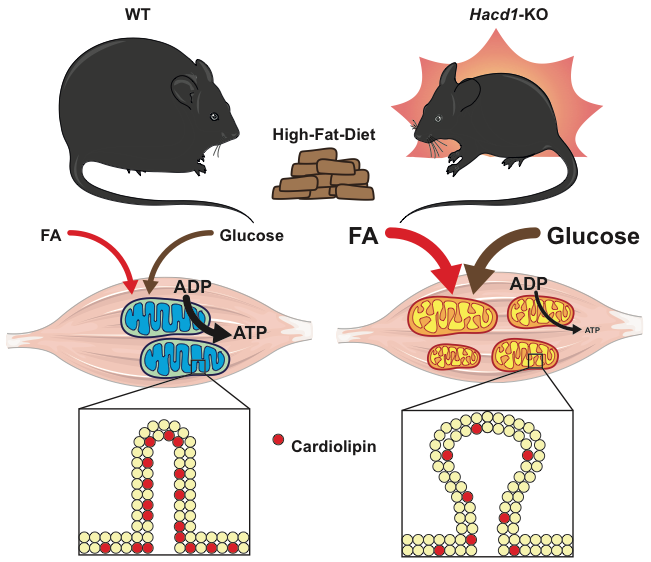A mechanism controlling the efficiency of mitochondrial coupling has been revealed: mechanistic and medical perspectives
 In an article available here, published on January 1st in Science Advances, the comparative medical genetics group of the BNMS team reveals an original mechanism by which the content of cardiolipin, a phospholipid present in the inner membrane of mitochondria, controls the coupling efficiency between the oxidation of energy substrates and the phosphorylation of ADP to ATP (OXPHOS coupling).
In an article available here, published on January 1st in Science Advances, the comparative medical genetics group of the BNMS team reveals an original mechanism by which the content of cardiolipin, a phospholipid present in the inner membrane of mitochondria, controls the coupling efficiency between the oxidation of energy substrates and the phosphorylation of ADP to ATP (OXPHOS coupling).
This control mechanism was elucidated in mice deficient in Hacd1, a gene specifically expressed in muscle and coding for an enzyme involved in lipid synthesis pathways. Interestingly, it has been shown that a reduction in mitochondrial efficiency restricted to the muscle protected Hacd1-KO mice from diet-induced obesity, thus paving the way for innovative therapeutic strategies in the field of mitochondrial myopathies and obesity-related disorders. This work was achieved thanks to several collaborations, in particular with Geneviève Derumeaux’s intramural team. This work is part of the AFM-Telethon Translamuscle funding resource. 06/01/2021


